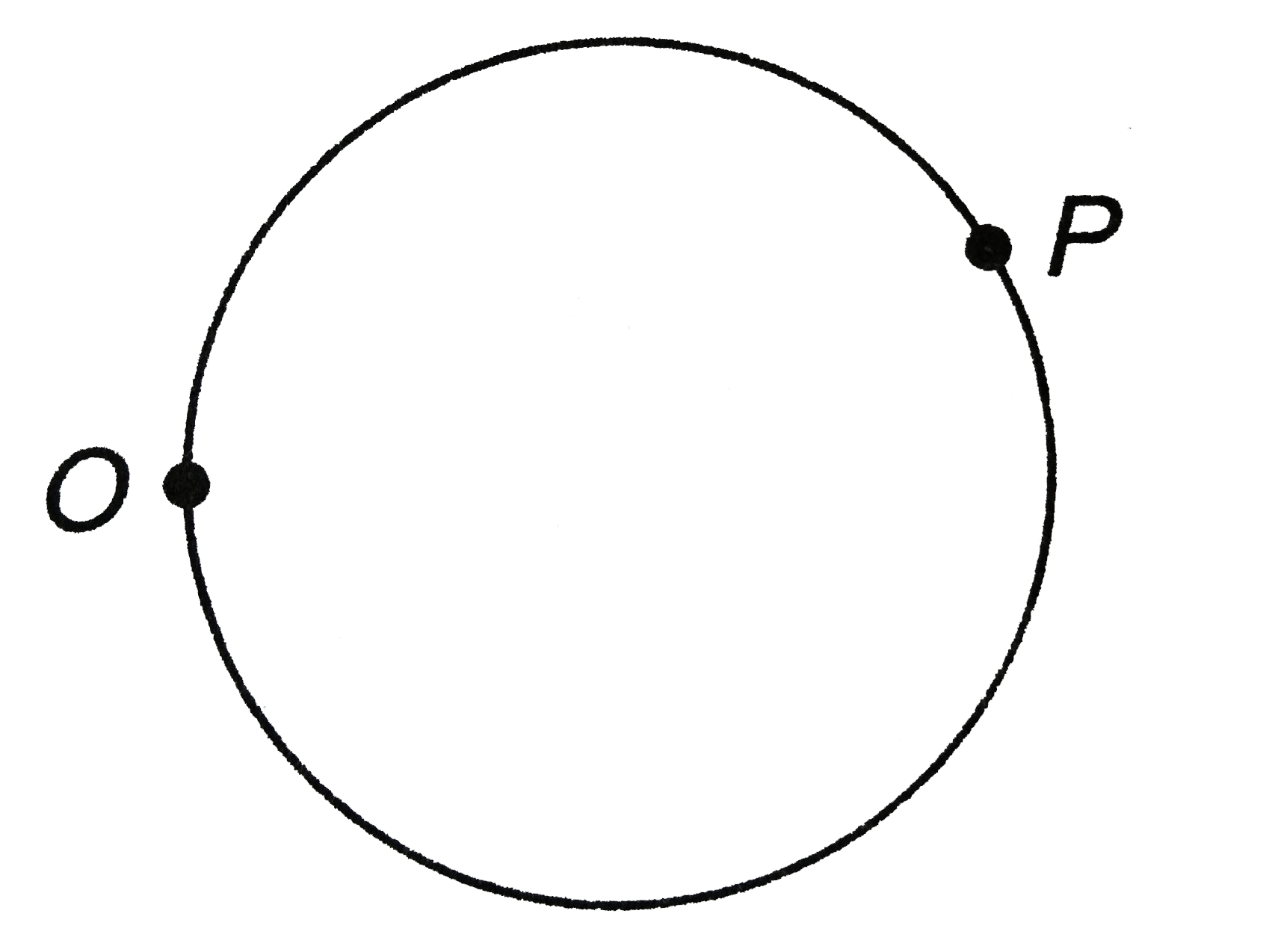A particle moves in a circle of radius 20 cm with linear speed of 10 m/s. Find the angular velocity
500rads
150rads
50rads
15rads
The correct Answer is:C
To find the angular velocity of a particle moving in a circle, we can use the relationship between linear speed and angular velocity. The formula to relate them is:
ω=VR
where:
- ω is the angular velocity in radians per second,
- V is the linear speed in meters per second,
- R is the radius of the circular path in meters.
1. Identify the Given Values:
- Linear speed V=10m/s
- Radius R=20cm=0.2m (conversion from cm to m)
2. Use the Formula for Angular Velocity:
- Substitute the values into the formula:
ω=VR=10m/s0.2m
3. Calculate the Angular Velocity:
- Perform the division:
ω=100.2=50radians/s
4. Conclusion:
- The angular velocity of the particle is 50radians/s.
- ω is the angular velocity in radians per second,
- V is the linear speed in meters per second,
- R is the radius of the circular path in meters.
- Linear speed V=10m/s
- Radius R=20cm=0.2m (conversion from cm to m)
- Substitute the values into the formula:
ω=VR=10m/s0.2m
- Perform the division:
ω=100.2=50radians/s
- The angular velocity of the particle is 50radians/s.
Topper's Solved these Questions
- CIRCULAR MOTIONBOOK - HC VERMACHAPTER - CIRCULAR MOTIONEXERCISE - Worked Out Examples
13 Videos
- CIRCULAR MOTIONBOOK - HC VERMACHAPTER - CIRCULAR MOTIONEXERCISE - Short Answer
10 Videos
- CENTRE OF MASS, LINEAR MOMENTUM, COLLISIONBOOK - HC VERMACHAPTER - CENTRE OF MASS, LINEAR MOMENTUM, COLLISIONEXERCISE - Exercises
64 Videos
- FLUID MECHANICSBOOK - HC VERMACHAPTER - FLUID MECHANICSEXERCISE - Exercises
35 Videos
Similar Questions
Knowledge Check
A particle moves in a circular path of radius 0.5 m with a linear speed of 2 ms−1 ,its angular speed is
A2rads−1B3rads−1C4rads−1DNone of theseA particle is moving in a circle of radius 20 cm has a linear speed of 10m/s at a certain instant and linear speed is increases at the rate of 2m/s2. What is the rate at which its acceleration in U.C.M. is increasing at that instant?
A400m/s2B200m/s3C300m/s3D100m/s3A particle is moving in a circle of radius 4cm with constant speed of 1cm/s. Find
(a) time period of the particle.
(b) average speed, average velocity and average acceleration in a time interval from t=0 to t=T4. Here, T is the time period of the particle. Give only their magnitudes.AT=2s , 1.9cm/s 0.23cm/s2BT=25.13s , 0.9cm/s 2.23cm/s2CT=15.13s , 1.9cm/s 1.23cm/s2DT=25.13s , 0.9cm/s 0.23cm/s2

Particle P shown in figure is moving in a circle of radius R=10 cm with linear speed v=2m/s Find the angular speed of particle about point O.
View SolutionA particle moves in a circle of radius R=2122m with constant speed 1m/s. Find,
(a) magnitude of average velocity and
(b) magnitude of average acceleration in 2 s.
View SolutionA particle is moving along a circle of radius 20cm, with a linear velocity of 2m//s. Calculate the angular velocity of the particle.
View SolutionA particle moves in a circle of radius 20cm. Its linear speed is given by v=2t where t is in seconds and v in ms−1. Then
View SolutionA particle moves in a circle of radius 20 cm. Its linear speed is given by v=2t, where t is in second and v in metre/ second. Find the radial and tangential acceleration at t=3s.
View Solution
